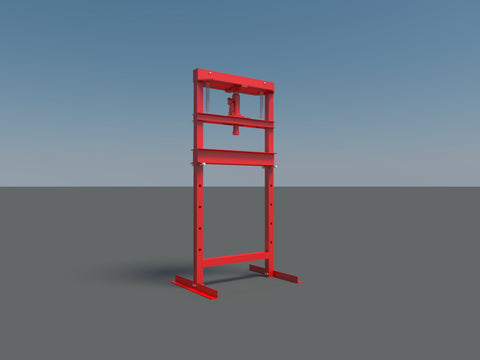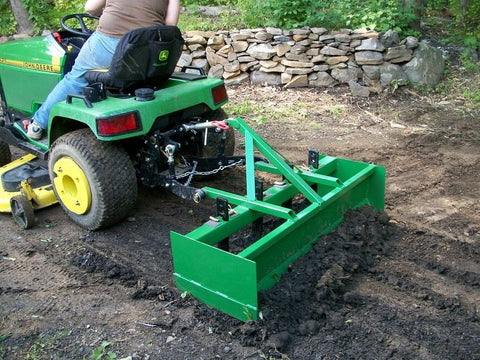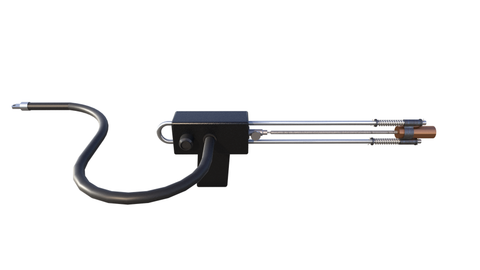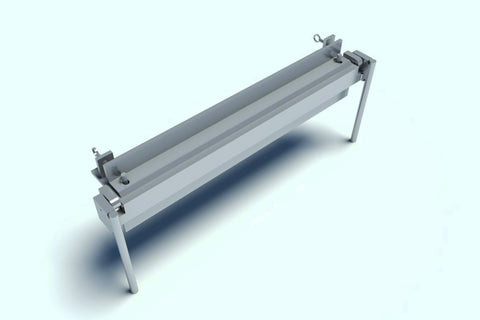Build Your Own Portable Towable Backhoe Plans DIY Track Hoe Excavator Garden Digger
These detailed DIY plans will walk you through the whole building process for a Portable Towable Backhoe including diagrams and material lists. The Portable backhoe is a small freestanding, fully functional backhoe. It is designed for light duty digging of trenches and holes and light duty uprooting of small shrubs and trees. It would be a valuable asset to any landscaper, plumber, electrician or homeowner.
While quite powerful for its size, please do not attempt to push this machine beyond its intended capacity. If you feel the machine tipping or lifting, reverse the handles and rethink your actions. Your safety is the first concern. A rip cord style kill switch might be a useful addition.
I have spent countless hours pouring over these materials. I have tried to include all necessary information. I have even consulted an unbiased party to measure and compare his finds to my plans.
Inside, you will find short hints on many areas where money can be saved. You will also find areas where no substituting is highly stressed. This is for your safety. Substituting or make-do is encouraged to save money as long as safety is not compromised. The one area I cannot help you in is the hydraulics. Unless you have access to a hydraulic "bone yard", the hydraulics will account for more than half of the project costs. You may find, though, that careful digging in junkyards and even your own back yard may save you hundreds on the rest of the items.
What is a Portable Towable Backhoe?
If you're wondering "What is a portable backhoe?" you are not alone. This article will help you understand the different types of backhoes available. Here are two of the most popular: the DR Towable Backhoe and the Kubota Deere Backhoe. This article will discuss each of these products in detail. You'll also discover the pros and cons of each type.
DR Towable Backhoe
With power to spare for landscaping, heavy lifting, and trenching, the DR Towable Backhoe will make your job easy. The backhoe has a powerful hydraulic system and is highway towable at up to 45 mph. You can even tow it using your ATV or Lawn Tractor. The DR Towable Backhoe is built for portability and has many options for your next project.
The DR TOWABLE BACKHOE comes with prominent safety labels that remind you to follow the operating instructions. Its location on the machine is also marked on the label. You should study the safety label and replace it when necessary. In addition, the DR TOWABLE BACKHOE has a hefty warranty policy. However, you should not rely on this warranty if you use your backhoe for commercial applications. Likewise, never take the DR TOWABLE BACKHOE to a park without a permit.
To set up a DR Towable Backhoe, you need to attach the tow vehicle. You can attach the backhoe to the vehicle using a tow hitch. If your Backhoe is towed with a trailer, make sure that the trailer's hitch has a ground plug. Then, attach the harness to the Backhoe with four Cable Ties.
Kubota Deere Backhoe
If you're looking for a portable backhoe, there are a few things to consider. This machine has a lot of features and a low price. Unlike some backhoes, you can use it in either the seated or standing position. Kubota backhoes have a cab that is heated, a radio, and a dome light. Kubota backhoes can be used to dig up soil or pop rocks.
One thing to consider when choosing a backhoe is the type of terrain you plan to work in. Do you intend to work in clay or top soil? If so, you will probably need a larger backhoe than a regular one. Some models have a grapple bucket that will help you move cylinder-shaped objects. Another feature you'll need to consider is the size of the bucket.
Another important feature of a backhoe is its ease of use. The hydraulic system is effective at moving tons of dirt and soil, and the bucket has two sharpened teeth that make it more durable. In addition, the backhoe has a 120 degree rotation angle, making it easy to move dirt from one spot to another. The backhoe is the perfect tool for a variety of tasks, including small excavations.
All DIY plans are designed by Ben Stone. Ben is a retired Engineer in Canada. Ben also drafts these himself using the latest AutoCAD software to ensure accuracy. He studied Engineering back in the early 1980's. After over 30 years in the Construction industry he developed a passion for building cool items around his farm and cabin. These are great DIY projects. With a little skill anybody can Do It Yourself. Ben is always a email away if you have any questions while building one of his projects. He is adding new plans all the time.














